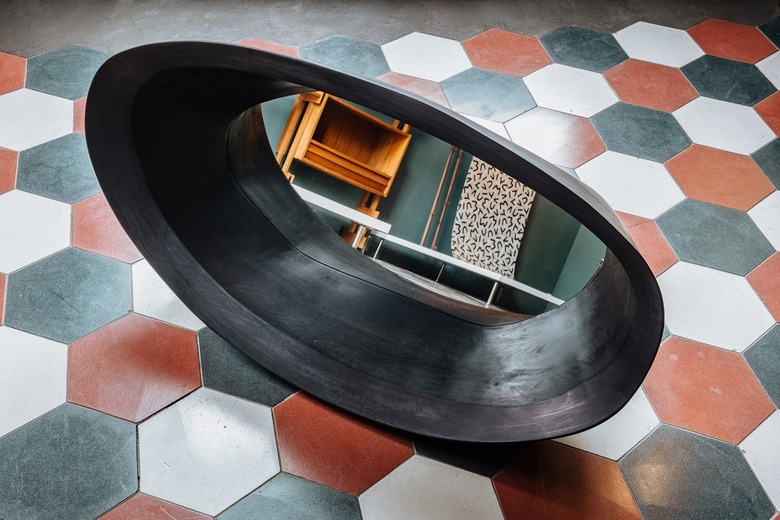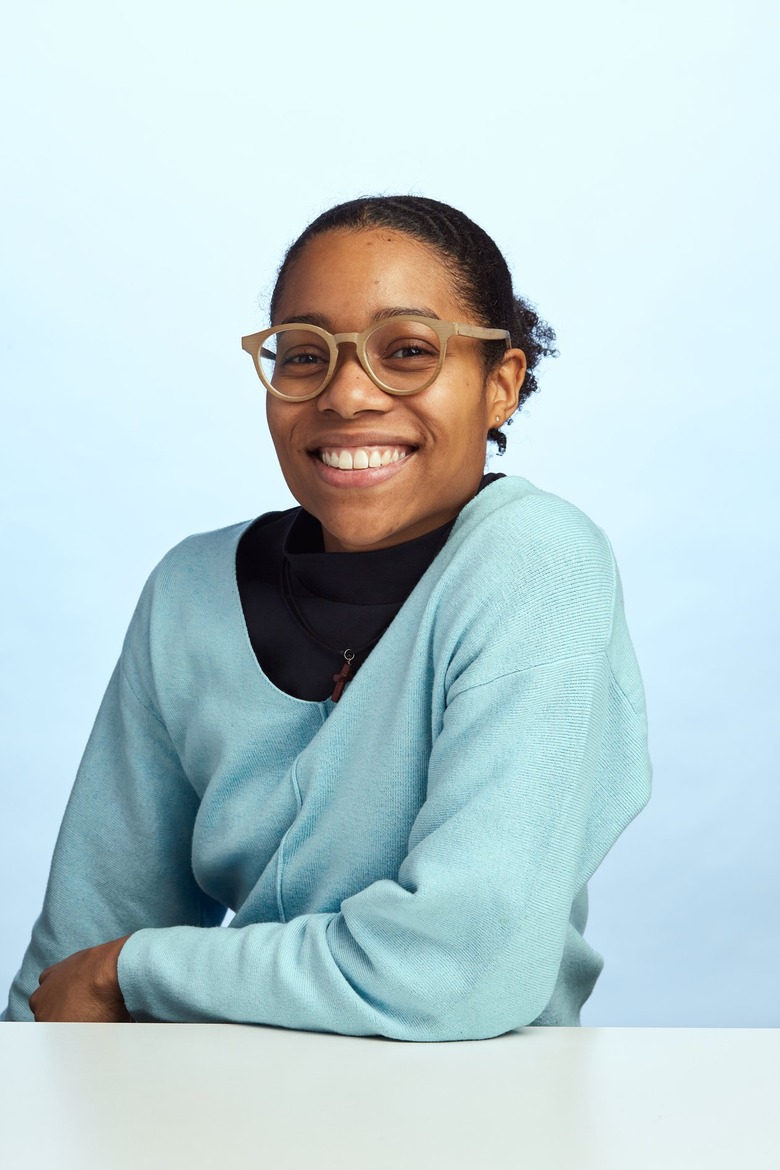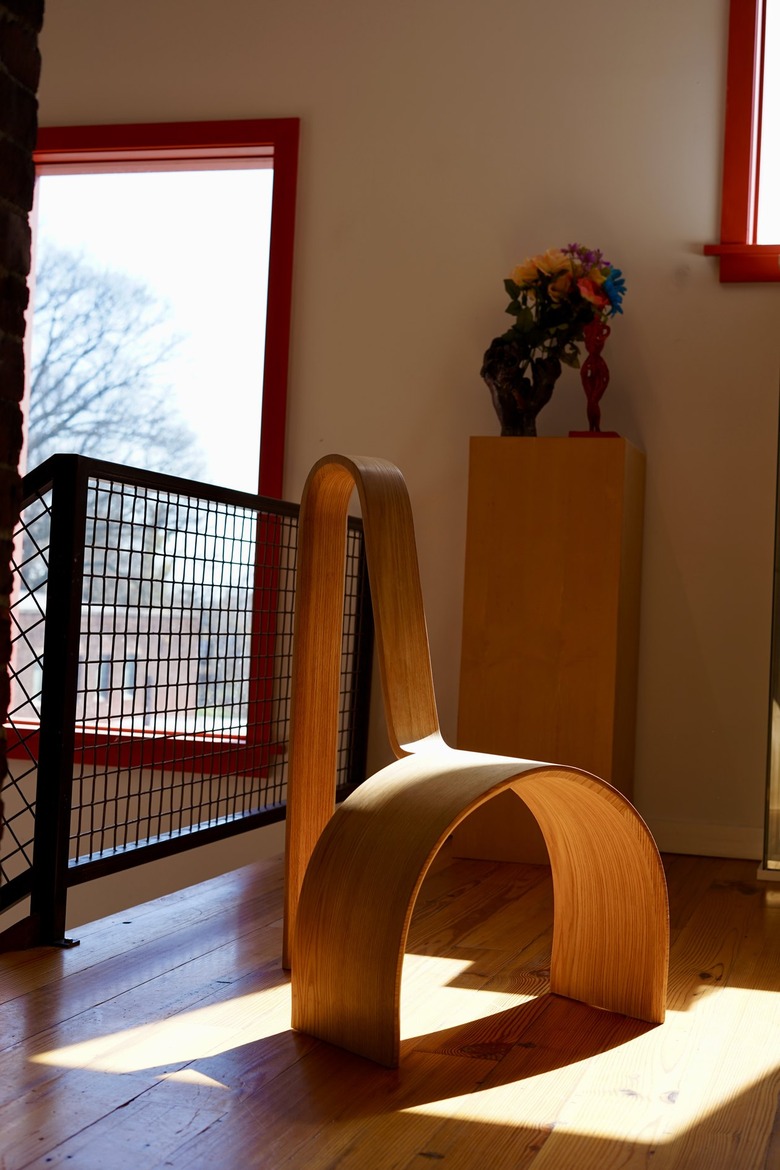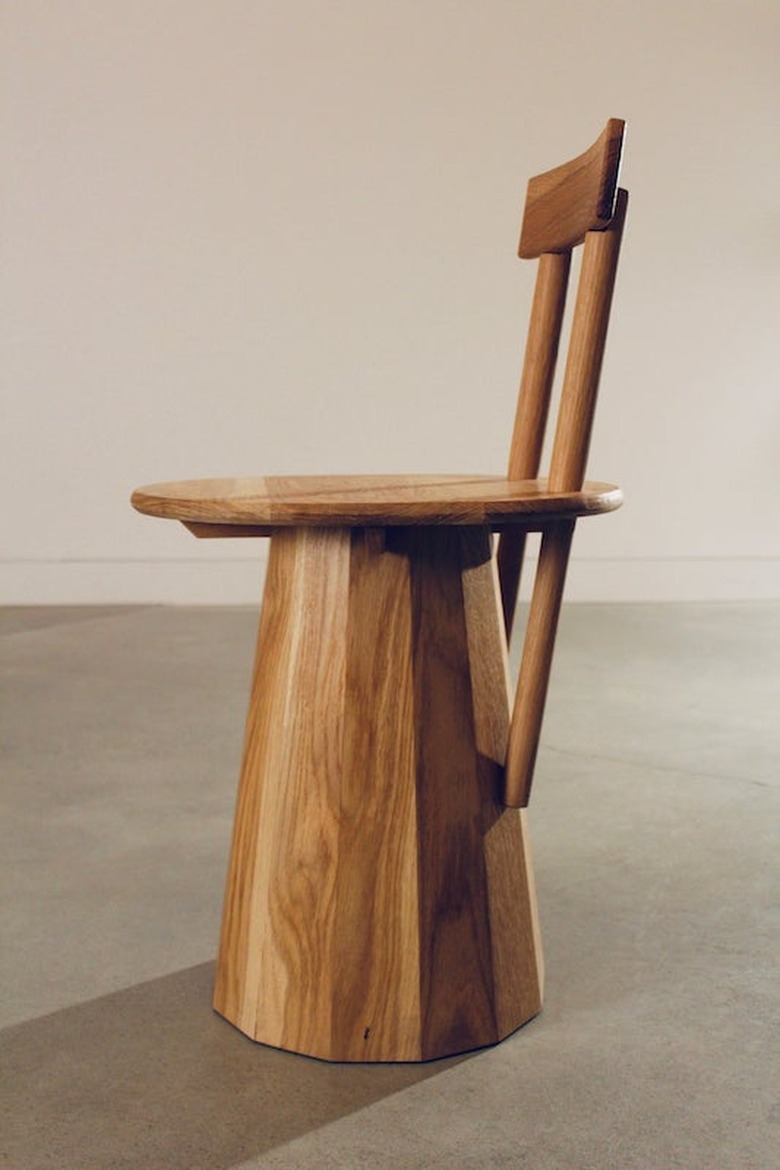How Tiarra Bell Weaves Furniture Design Together With Her Faith
Tiarra Bell is a Philadelphia-based furniture designer whose work is deeply rooted in her faith. One of nine siblings, Bell was raised in a home where cable television was discouraged, so as a child, she spent her days reading and exploring. At one point, she thought she wanted to become a paleontologist, but building things already ran deep in her family. Bell's father was a contractor and would bring her to his job sites, but it was a high school internship that actually solidified design as her destiny.
"My high school, Science Leadership Academy, required us to get an internship from sophomore year to senior year, and I got connected with Alex Gilliam, who runs Tiny WPA, a community-based design organization in Philadelphia," Bell tells Hunker. "I worked with him up until my senior year, and he really taught me the foundations of design."
Though Bell had the experience of watching her dad build and restore homes, coupled with her internship with Alex Gilliam, a fine arts furniture fair with her aunt steered the creative toward designing furniture.
"Alex exposed me to the world of product design and big-scale projects within community spaces," Bell says. "But after attending a local furniture fair, I really wanted to hone in on furniture. That same day, I went to Charles Todd, the owner of Mt. Airy Custom Furniture, and asked him for an apprenticeship. He agreed, and in my junior and senior years of high school, he taught me how to make furniture."
Bell continued to work alongside Gilliam; and with Todd, she learned fine woodworking skills. For her high school capstone project, Bell made her own furniture line, which served as a stepping stone for her acceptance to the Rhode Island School of Design — one of the top design schools in the country. The artist says that her time there gave her some of the most challenging and rewarding experiences of her life.
"Being at RISD was completely different from what I was used to. I was four hours away from home without any family or friends, and I'm an introvert, so it was very lonely. On top of that, RISD is extremely hard, especially in the first year," Bell explains. "The classes were intense — eight hours long, three days a week. Plus, in some of my classes, I was the only Black student, which put extra pressure on me. I was insecure at first, but I found I had a lot of strengths — and a lot of weaknesses. But once I got into my furniture design major, everything just really took off."
Bell says that when she started out, she looked up to modern furniture designers George Nakashima and Sam Maloof, but in her junior year at RISD, a class with Botswanan designer Peter Mabeo changed how she saw furniture and design.
"That class changed me, from not just making objects that are beautiful, but making objects that have meaning and depth," Bell says. "Peter was also the first Black furniture designer whose work I felt had significance to it."
One of the best examples of Bell's intention to bring meaning to her work is her purity mirror. Bell turned to the Bible for the biblical interpretation of purity, which led her to design a curved mirror that was carved from panga panga wood and crafted by Mabeo's crew in Botswana.
"When I designed the purity mirror, I really wanted to bring in my beliefs and combine that with things that are considered pure in Botswana," Bell says. "I was looking at the Kalahari Desert, which is so pure and untouched. Then, I took the word 'purity' and started diving into the Bible, which has an opposite definition of purity. In the Bible, it's about how God can take a person who's flawed and make them pure. So I tied those two [definitions together], taking the form of the sand dunes of the Kalahari Desert [for the frame] and placing a mirror in the center because it represents self-reflection."
The quality of Bell's work is evident, but it's her unique worldview and the biblical connection to each piece of furniture that has also set her apart from other designers. Bell attributes this part of her craft to working with Peter Mabeo.
"Peter helped me put a why to my product," Bell says. "He taught me that furniture should not just be functional — it should be something that can transform a person's life."



